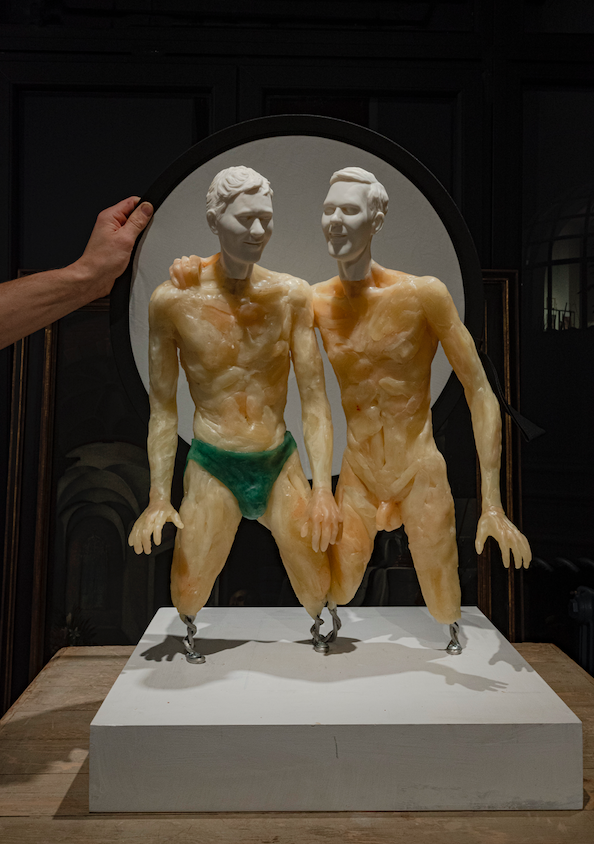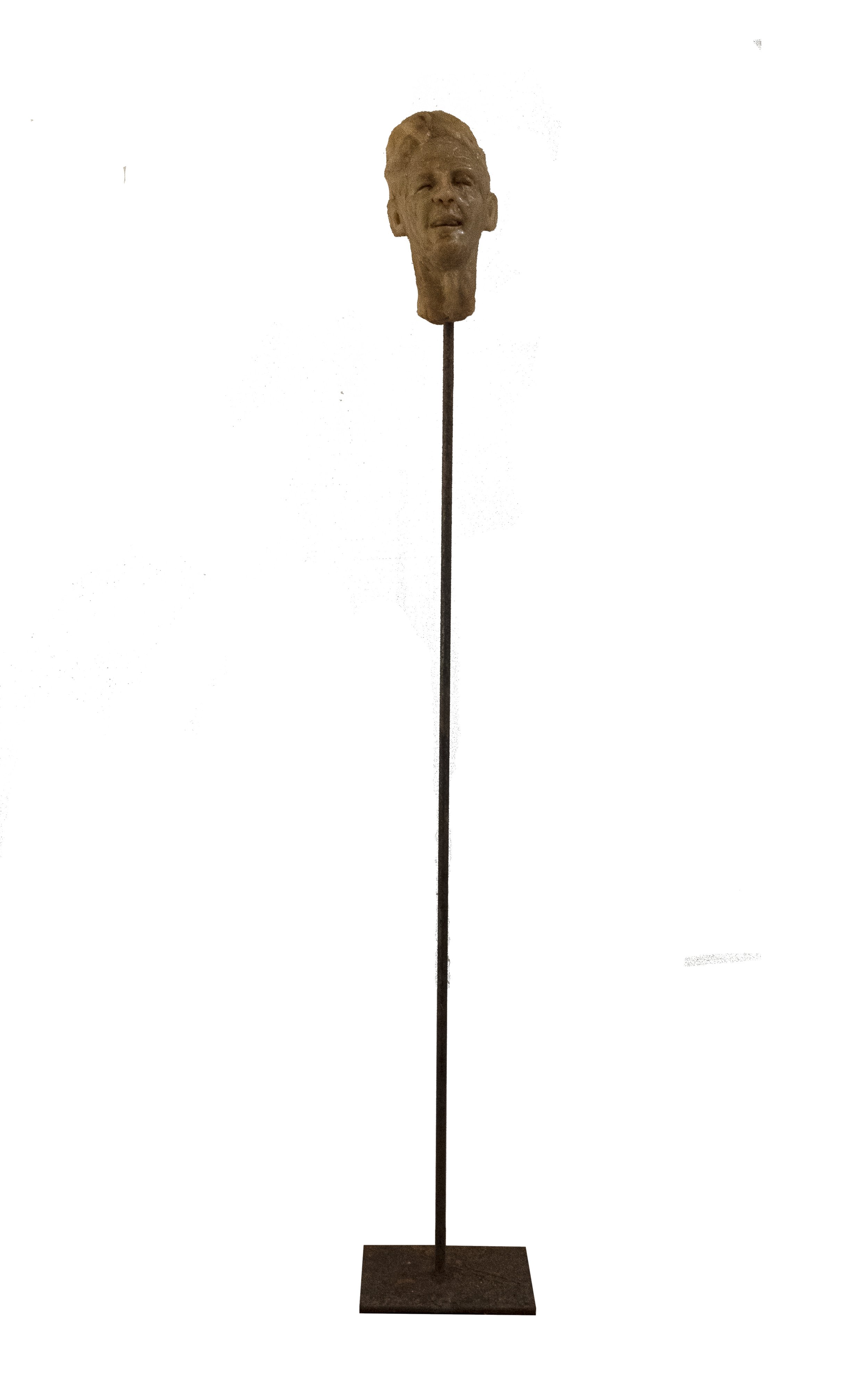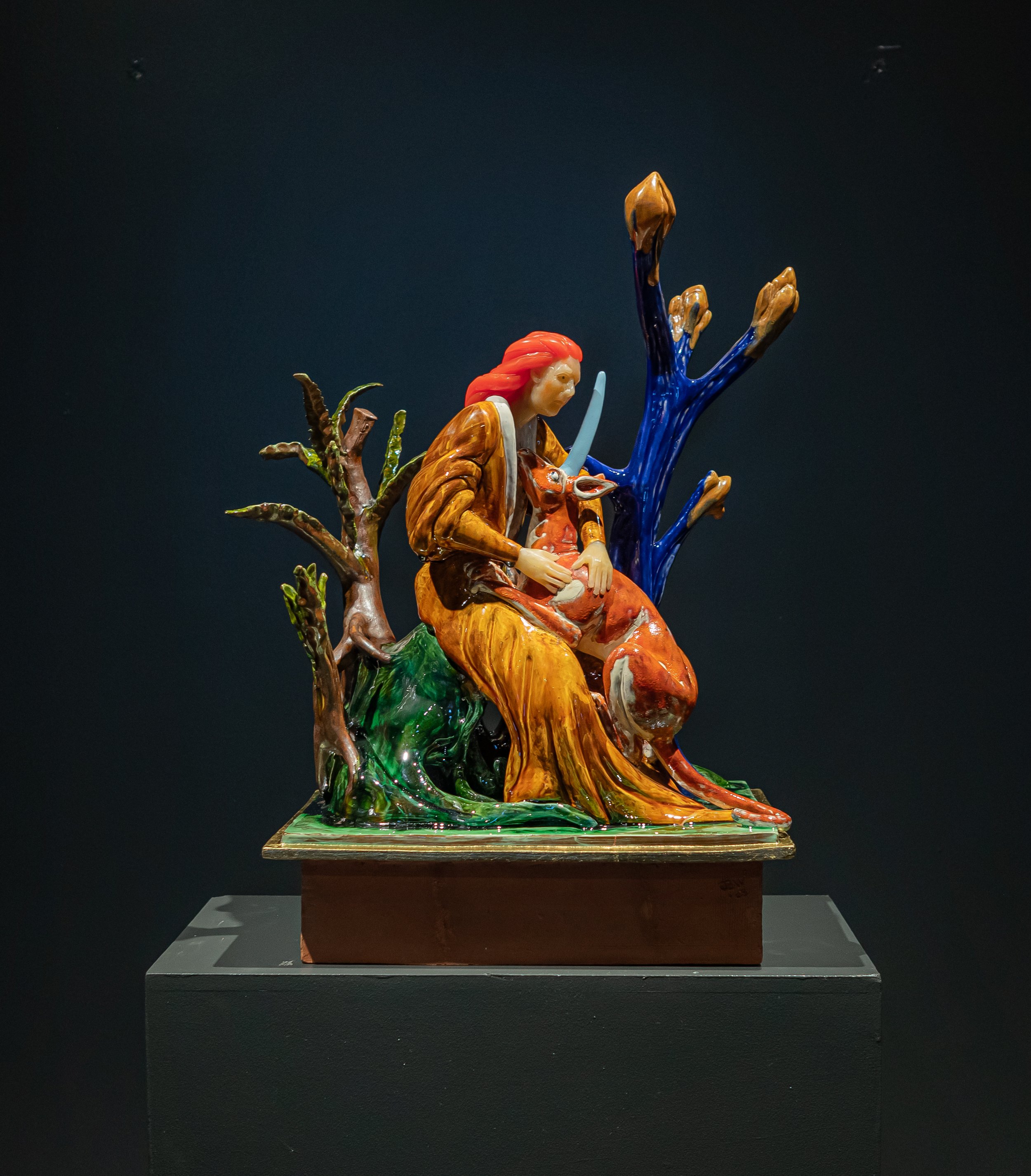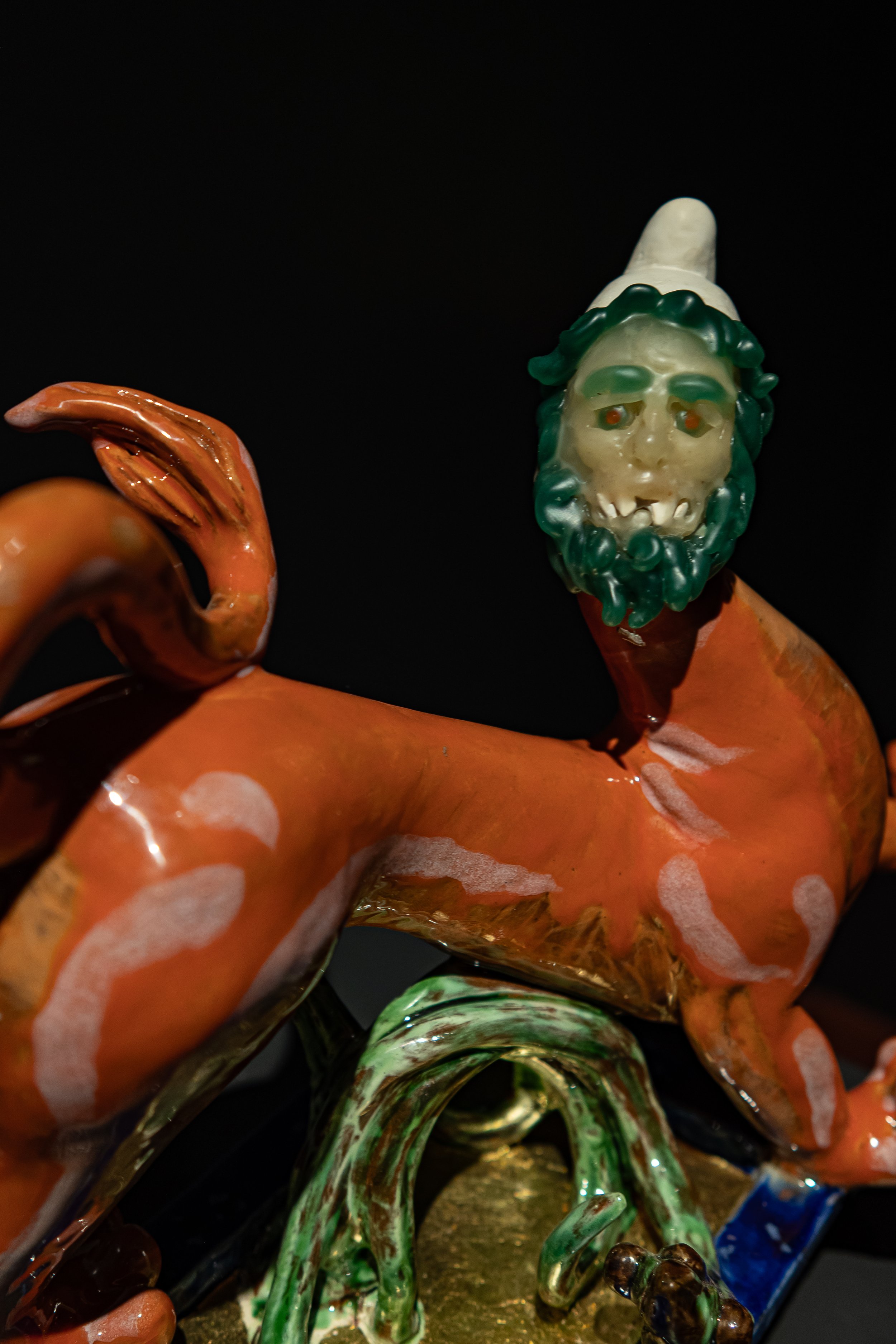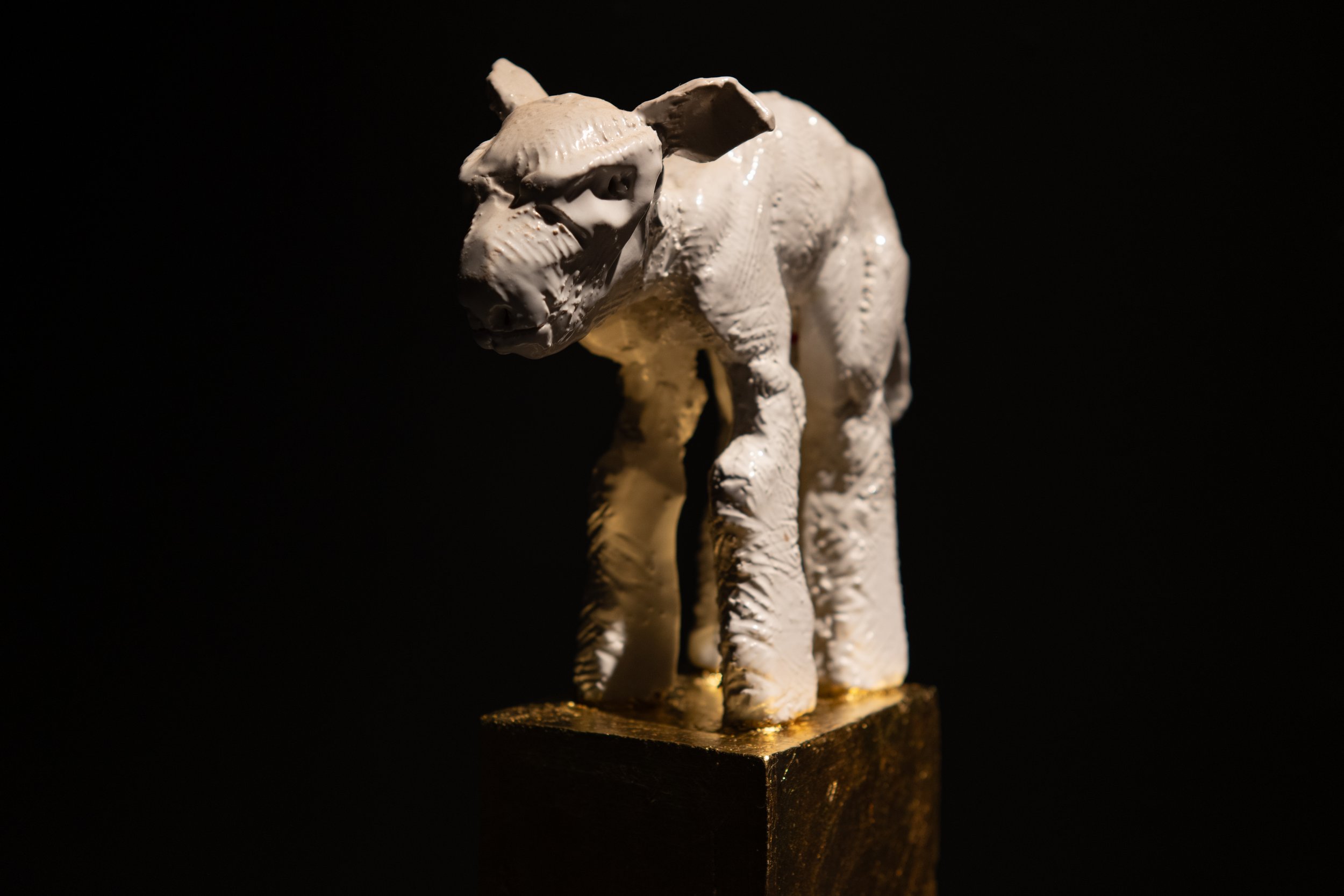JAMES B. WEBSTER
EXPLORING MYTHS & emotions
JAMES B. WEBSTER (born Suffolk, 1978) received classical training in sculpture in Florence, Italy, where he apprenticed under Marianne Luchetti. Upon returning to the UK, fueled by a deep passion for anatomy, Webster returned to the countryside of his native Suffolk, where he spent months in isolation at his studio. There, he immersed himself in studying his subjects, not only mastering various ceramic techniques but also pushing the boundaries of his art.
In 2013, James presented “Trophies," an installation composed of eight porcelain animal skulls and vertebrae placed on concrete cubes fixed in a steel plate. This marked Webster's first exploration of porcelain. Like a Victorian-era scientist collecting information and recreating his discoveries, Webster worked from real animal skeletons that he observed and memorized. The recent destruction of ancient icons and temples, as well as our latent neglect of the environment, have become important themes in the artist's work. By using ceramics instead of taxidermy, his working process strives to idolize the living as if they had already passed away. He uses materials that are both strong and vulnerable, precious and disposable, to draw a sense of archaeology. This is not a sculpture about death but a story of life.
Building on his exploration of mortality and fragility, James presented "Martyrs" in 2018. This installation features nine sculptures inspired by the Ancient Greek herma, an offering sculpture used to safeguard travelers. These sculptures typically depicted either Hermes, the god of travelers, or an important leader or family member. Webster reinterprets the herma to address both personal and social themes. He uses the herm's form to address the contemporary threats faced by travelers, such as extremism and political opposition. However, he incorporates a novel element: protruding genitals. Webster uses this element to consider the many layers of threat. Martyrdom is the prevailing theme in the portraits. The subjects, he describes, are martyrs who are victims, casualties, and those who make personal sacrifices for both belief and cause. Race, gender, body, and soul are all explored, dispelling preconceptions and stereotypes. By including women in this traditionally male image, Webster brings the ancient concept into a very present-day commentary. In "Martyrs," Webster further unifies porcelain and concrete. The softness and sensitivity of the porcelain is juxtaposed against the rough columns of concrete, again representing the vividness of life explored even in the face of the martyrs' final decisions.
Since 2020, James has been working on an erotica series titled "Love Tokens," which captures the tension of the flesh through intimate and graphic sculptures focused on the meeting points of bodies and our relationship to intimacy. In 2022, he added wax to his sculptor's palette during a duo exhibition with painter Darren Lynderman, creating a series of wax bodies.
In 2023, James Webster moves to Brussels and set up his workshop in the basement of our Brussels gallery and present a wax and terracotta exhibition inspired by the medieval myths and legends: “Bestiary”.
www.jamesbwebster.com
IG: @jamesbwebster






















